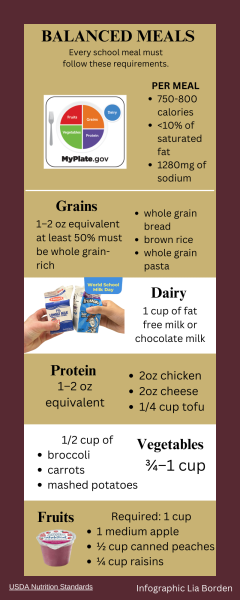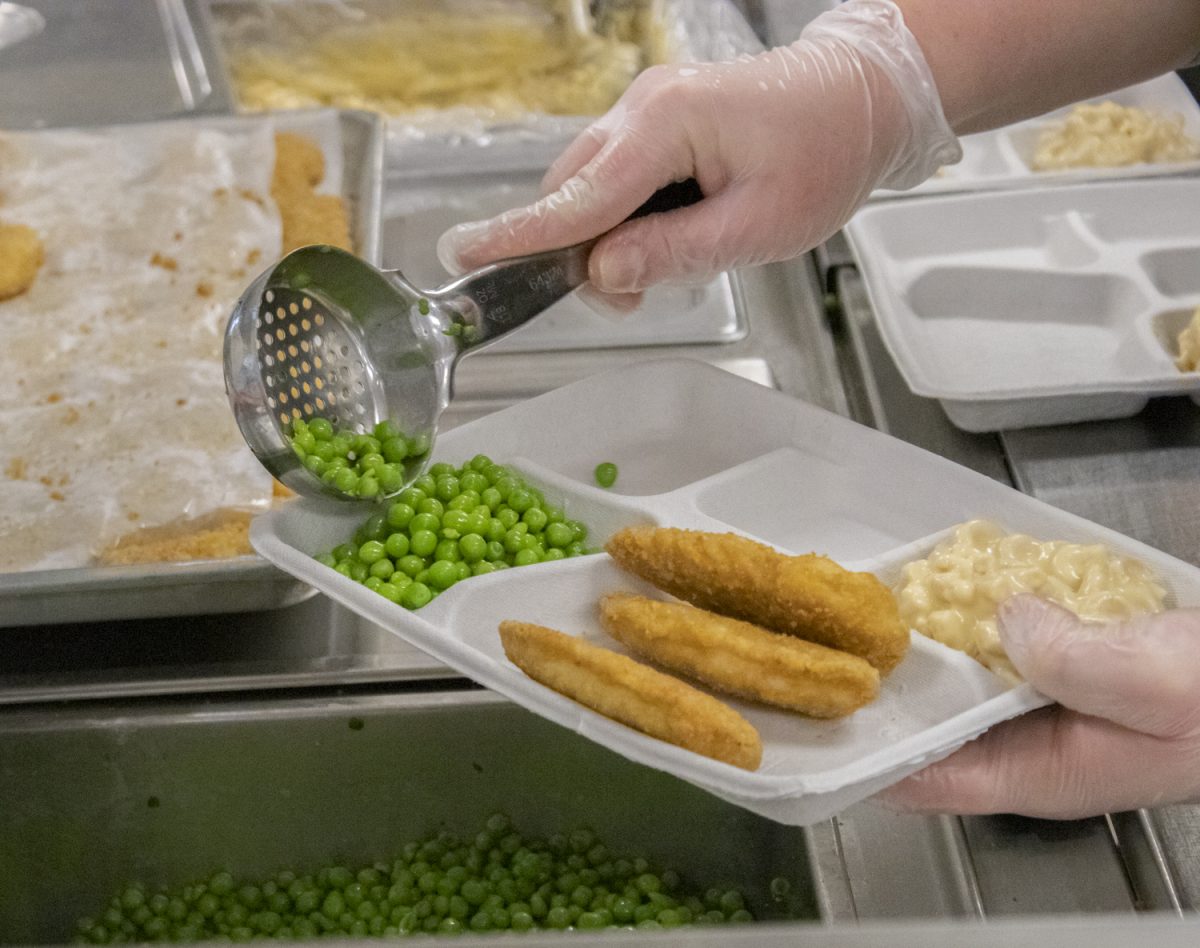While many students believe school meals are unhealthy, in reality, they follow strict dietary regulations provided by the federal government.
Despite some negative opinions and reactions, many students continue to get school meals, which are free for all students due to state funding. According to a Harbinger survey of 134 students from Dec. 12 to Dec. 15 via Google Forms, 47% of respondents said that they believe the school meals are not nutritious while 44% of students get the school meals regularly.
Most students are oblivious to the process that goes into making school meals healthy and nutritious. Recently retired Food Services Manager Diane Cofer said the cafeteria staff works hard to prepare balanced meals that meet the United States Department of Agriculture (USDA) regulations while still appealing to students’ tastes.
“The majority of students want the processed meals, although we try to make a balanced mix,” Cofer said. “[This is] easier said than done. We are always trying to buy products and [the distributors] don’t always have the products we are trying to buy to meet all [USDA] requirements.”
The cafeteria staff works together to create meals that students enjoy, which follow strict guidelines, specific to high school-aged students. To meet USDA requirements, every meal must have between 750-800 calories, less than 10% of which are from saturated fat and less than 1280 mg of sodium. This includes every ingredient, such as the tomato paste in pasta sauce and dressings on the salad.
According to Cofer, these meals are pieced together like a puzzle. Since the start of the Obama administration in 2008, states and federal boards have pushed for healthier school meals. Changes in guidelines resulted in a reduction of highly appealing, low-nutrient items such as chicken nuggets and sugary cereals.
“[The food] is more nutritional than it has ever been,” Principal Sean Bevan said. “It’s continuously been regulated since COVID-19 with more rules and regulations.”
Every meal must have each of the five components—grain, milk, vegetables, protein and fruit. Throughout the week, the meals must also include an orange, a starch, a bean and other vegetables to ensure balanced, nutritious meals.
According to the Harbinger survey, 55% of respondents said they take nutritional value into consideration when making food choices. When asked, “In your opinion, what is a nutritionally balanced meal that could be served at the school?” many respondents expressed they want better quality food with more fresh fruit and vegetables.
“I think the meals served at school are not really a problem; it’s mostly the ingredients that seem off-putting to me, and you don’t have easy access to the ingredients/nutrition info,” one respondent said. “I do think the veggie side dishes should be fresh veggies instead of canned and heated.”
“[I want] better fruit and vegetables; most people only eat the main hot meal and not what goes with it,” another survey respondent said.
Many students seem to compare school lunches to restaurant-quality food without considering the restrictions and guidelines the cafeteria must navigate. The cafeteria has limited income and works under a strict budget that limits the variety of offerings.
“We are a self-operating business,” Cofer said. “We have to make money to spend it, to buy the food and to pay the staff. We only continue serving meals that enough people will buy.”
The kitchen staff believes they give options for everyone. They try to make a variety of meals that students like and consistently offer multiple options. Besides the hot lunch, they always serve pizza, salads and sandwiches. According to Cofer, they play close attention to what students select. For example, if only 200 people order a meal, they no longer sell it.
“We receive some stable food products from the government,” Cofer said. “We receive some reimbursement for the reimbursable meals we serve. To make this profitable, we need to be creative with the food they offer and incorporate it into our daily menus, monitor waste and monitor excess costs.”
Due to the need for profit, everything is connected. Staffing and delivery issues have impacted what meals they are able to make. According to Cofer, a recent hire may allow them to make new meals in the near future.
“I am hoping someone fresh and new coming in and seeing it in a different light will be able to bring some new creative ideas to Algonquin,” Cofer said.











